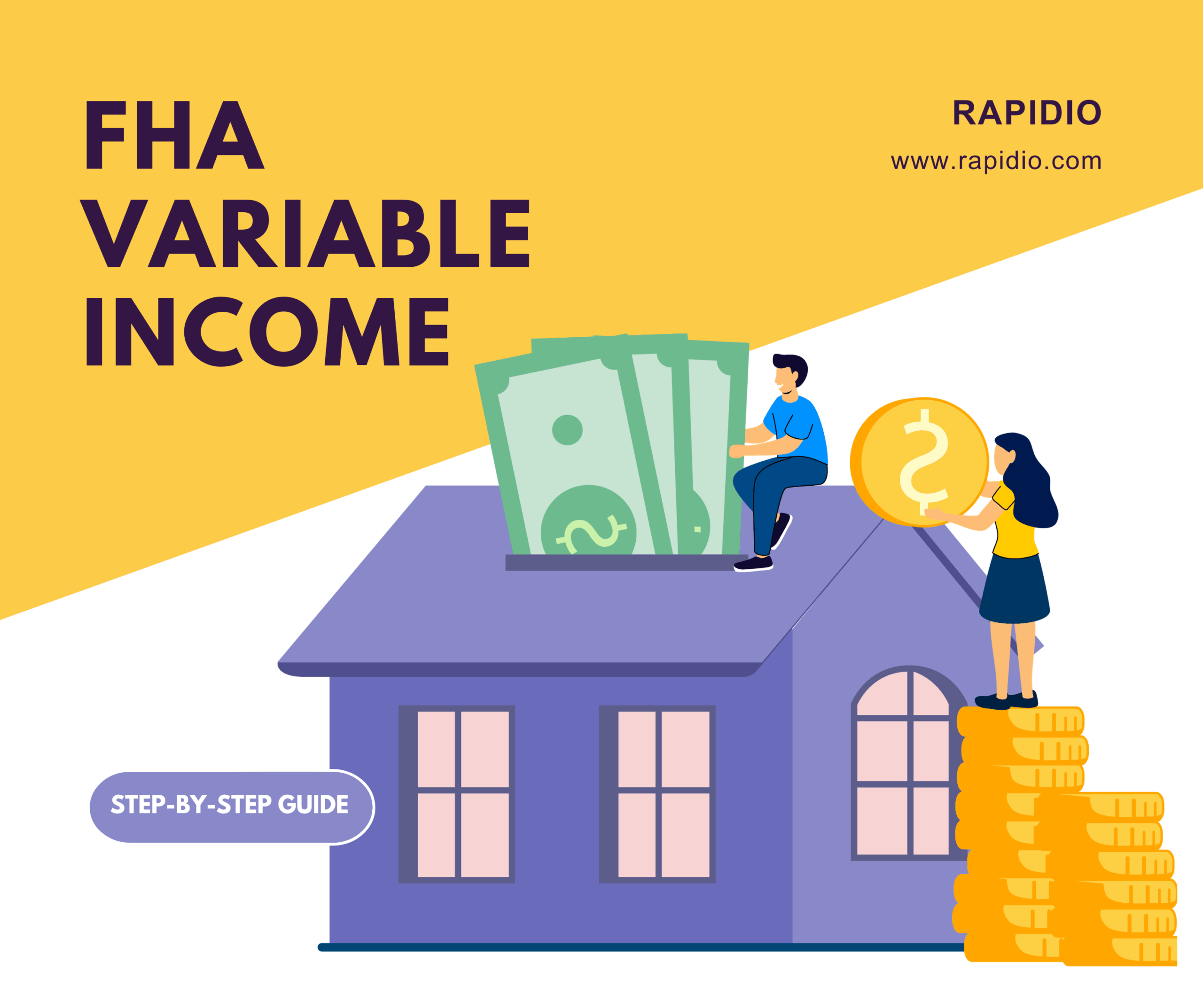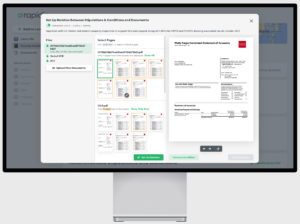FHA Variable Income: Overtime, Bonus & Shift Differential — Step-by-Step Guide
A practical, underwriter-friendly process for handling FHA variable income — overtime, bonus, and shift differential — from docs and averaging to trending checks and Smart Conditions.
Why FHA Variable Income Is Tricky
Variable earnings (overtime, bonuses, shift differential/shift pay) can change month-to-month. Lenders typically look for:
- History/consistency (sufficient documented receipt)
- Likelihood of continuance (reasonable expectation)
- Reasonable averaging (often 12–24 months) and trending checks
- Clear documentation (pay stubs, W-2s, VOE/comp plans)
Heads-up: Program specifics vary by investor and change over time. Use this as a practical framework and follow your selected guideline and overlays.
Step-by-Step Workflow (FHA Variable Income)
- Upload complete docs (see checklist below). Mixed PDFs are fine—Rapidio’s Document AI will classify.
- Select program in Rapidio (FHA or your FHA overlay).
- Review extracted income (base vs. variable components).
- Check Smart Conditions for missing docs, recency issues, or trend flags.
- Average variable income per program posture (12/24 months), validate trend with YTD.
- Address declines if present (policy may require conservative use or exclusion).
- Add clarifying VOE/comp plan language if underwriter is likely to ask.
- Submit an underwriter-ready package with Rapidio’s worksheet and condition list.
Documents Checklist (by Income Type)
| Income Type | Core Docs | Helpful Extras |
|---|---|---|
| Overtime (OT) | 30 days pay stubs (YTD), last W-2, 2 Year-End pay stubs (if available), written VOE with OT detail | Timekeeping summaries; manager note on likelihood of continuance |
| Bonus | 30 days pay stubs (YTD), last W-2, VOE or comp plan showing cadence (quarterly/annual), prior year proof | Prior bonus statements; award letters |
| Shift Differential | Pay stubs with shift adders itemized; VOE breaking out differentials; last W-2 | Scheduling/contract indicating shift pattern |
| Commission (if present) | 30 days pay stubs (YTD), last W-2, VOE/comp plan | 12–24 months breakdowns by month/quarter |
Need full checklists for other income types? See What Docs to Upload for Accurate Income Calculation.
Averaging & Trending Essentials
Averaging
- Compute monthly averages using YTD and prior year(s).
- Ensure the averaging window matches your program posture.
- Separate base vs. variable; average variable components independently.
Trending & Continuance
- Check YTD vs. prior year: rising, flat, or declining?
- Material declines may require conservative treatment or exclusion by overlay.
- Document reasonable expectation to continue (VOE/comp plan).
Rapidio tip: Smart Conditions will flag insufficient history, missing Y/E stubs, or unverified bonus/shift differential so you can cure issues before submission.
Worked Examples (Illustrative Only)
Example A — Nurse with Overtime + Shift Differential
Scenario: YTD through September shows OT pay of $9,000 and shift differential of $2,700. Prior year shows OT $10,800 and shift diff $3,600.
- YTD months = 9 → OT avg = 9,000 ÷ 9 = $1,000/mo; Shift avg = 2,700 ÷ 9 = $300/mo
- Prior year months = 12 → OT avg = 10,800 ÷ 12 = $900/mo; Shift avg = 3,600 ÷ 12 = $300/mo
Interpretation: OT is slightly increasing; shift diff is flat. A common posture is to average per component over the required window and validate trend with YTD.
Illustrative variable income: OT $950–$1,000/mo + Shift $300/mo ≈ $1,250–$1,300/mo (subject to lender/investor rules).
Example B — Quarterly Bonus
Scenario: Prior year total bonus $12,000 (4 x $3,000). Current YTD through June shows $6,000 (2 quarters).
- Prior year monthly avg = 12,000 ÷ 12 = $1,000/mo
- YTD monthly avg = 6,000 ÷ 6 = $1,000/mo
Interpretation: Stable bonus cadence. Many overlays accept an average around $1,000/mo when stability and continuance are supported.
Example C — Declining Overtime
Scenario: Prior year OT $9,600; YTD through August OT $4,000.
- Prior year monthly avg = 9,600 ÷ 12 = $800/mo
- YTD months = 8 → monthly avg = 4,000 ÷ 8 = $500/mo
Interpretation: Decline indicated. Many lenders apply a more conservative average or may limit/exclude variable income depending on severity and cause. Use VOE notes for context.
Disclaimer: Examples are for illustration only. Always follow your selected guideline and internal overlays.
Common Pitfalls & How to Avoid Them
- Missing Year-End stubs → upload two Y/E pay stubs when available for OT/bonus cadence.
- Unverified shift differentials → get VOE breaking out differential amounts and likelihood to continue.
- Blending base with variable → average variable components separately.
- Ignoring declines → address with VOE context; apply overlays if required.
- Out-of-date docs → ensure recency aligns to program and Rapidio’s Smart Conditions.
How Rapidio Speeds FHA Variable-Income Files
Document AI
Auto-classifies uploads (pay stubs, W-2, VOE) and extracts variable pay lines.
Guideline Logic
Applies FHA posture you select; separates base vs. OT/bonus/shift pay for averaging.
Smart Conditions
Flags missing Y/E stubs, VOE breakdowns, recency gaps, and trend issues.
Underwriter-Ready
Transparent worksheet with line-item provenance and assumptions.
AI + Human QC
Average completion ~17 minutesReviewed by QC
Overlays
Configure internal rules (e.g., declining trend handling) and enforce consistently.



